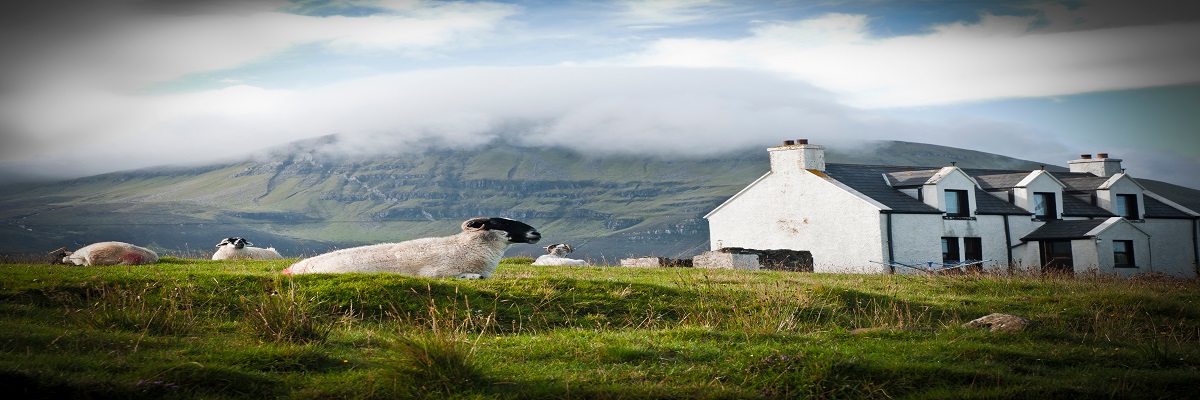Land Business Update | Week Commencing 15th April 2024
Farming
More details on the Scottish Agricultural Reform Route Map
The Scottish Government has published some more details of changes from 2025:
- Scottish Suckler Beef Support Scheme – calves will only receive a payment if their mothers have a calving interval of less than 410 days or if the calf is the first registered birth associated with that dam. All animals claimed from 2025 onward will be subject to the new calving interval conditions, regardless of their year of birth. The aim is to help cut emissions intensity and make beef production more efficient.
- The introduction of the first Whole Farm Plan conditions which require farmers and crofters to complete two baselining activities from a list of options, which include carbon audits, biodiversity audits, soil analysis, the creation of animal health and welfare plans or integrated pest management plans. This will need to be done to receive Basic Payments.
- Cross Compliance – new peatland and wetland standards will be added to Good Agricultural Environmental Conditions (GAEC) 6 to help protect carbon stores. They include prohibiting ploughing and cultivation and drainage.
Information on the changes from 2026 will be announced this summer. Please contact Mary Munro, our head of farming in Scotland, if you would like to discuss how farming policy could affect your land.
Water Restoration Fund grants now available in England – an example of hypothecation
This is a new £11m grant scheme that funds projects that restore and protect habitats (including re-meandering rivers, restoring water-dependent habitats and removing barriers to fish) and improve access to water and green spaces. There are two grants:
- Development grants – to build capability. Grants are from £75,000 to £250,000.
- Delivery grants – to deliver projects that have already been planned. Grants from £500,000 to £2m.
The funding comes from fines paid by water companies for environmental damage and is allocated to the region in which the damage occurred. There is £3m available in Anglian Water’s region, £3m in Thames’, £2m in South West Water’s, £1.7m in Yorkshire Water’s and £1m in United Utilities’. Grants can be combined with ELM schemes as long as there is no ‘double funding’ for the same actions. The closing date for applications is 7th June.
Hedgerow management Regulations for England
Following last year’s consultation on hedgerow protection, the government has issued these Regulations which put baseline hedgerow management practices on agricultural land into law. They largely mirror the previous cross compliance requirements, which were removed last year. They will come into effect as soon as agreed by parliament. They include:
- A two-metre wide buffer strip, measured from the centre of a hedgerow, where a green cover must be established and maintained. There should be no cultivation or pesticides or fertilisers applied within the buffer strip. Land currently growing crops is exempted until the crops are harvested.
- No cutting from 1st March to 31st August, which is the nesting period for most birds.
There are some exemptions and derogations, for example for hedges around parcels of land less than two hectares and around houses.
Property
Scottish agricultural land occupation survey
The 12th survey of land coming into and leaving the let sector from the Scottish Agricultural Arbiters and Valuers Association shows many of the same characteristics of previous surveys:
- A net loss of 5,100 acres from the let sector. This is mainly a result of 1991 tenancies ending or being relinquished but also that very little land that was not previously let is being let. In 2023, only 291 acres were ‘freshly’ let.
- However, 62% of the let holdings reported as becoming vacant were re-let. NB This is below the long-term trend.
- Most of the land re-let was bare land (67%, which is typical) and only 11% of lettings included a dwelling, which is below average. One of the reasons for this may be that houses have to meet more stringent energy efficiency and repairing standards than before and landlords are wary of the costs involved.
- Only two lettings were to new entrants, which is 7% of all of the new lettings, and both were for bare land.
The SAAVA describe the tenanted sector as in ‘stasis’ and that it ‘does not attract significant new land for letting’. Please contact Andrew Aitchison, our head of land management in Scotland, if you would like to discuss this or other Scottish property issues.
Climathon held to unlock new ideas for Cotswolds farm
Climathons are events that bring together a range of stakeholders to come up with solutions which would help to tackle climate change. Originally done in urban settings, the Countryside and Community Research Institute (CCRI) team at the University of Gloucestershire has adapted the concept for rural communities.
Our Cotswolds team was involved in helping CCRI to design and run a Climathon on a 480-acre, predominantly arable farm, on the Gloucestershire-Warwickshire border. The event sought to answer the question of ‘what might a climate resilient farm of the future look like?’ seeking input from a wide range of interested parties.
The solution development phase was positive and creative, and generated a range of ideas including: a water management plan to prevent flooding and encourage wildlife; creating a circular, self-reliant farming system; developing new revenues from nature markets; a programme of hedgerow restoration; development of a carbon neutral community education hub; and engaging with businesses by offering team building activities for away days, coupled with the development of a carbon neutral local food processing hub. The event was funded by the National Innovation Centre for Rural Enterprise (NICRE), of which Strutt & Parker is a founding business partner. Please contact Hannah Bloxham for more details.
Supply on the rise in the English farmland market
The volume of farmland available in England has started to creep up, with vendors being a combination of landowners seeking to cash in on record high values, retire or reduce levels of debt. Our latest English Estates & Farmland Market Review shows that:
- 7,400 acres have been publicly marketed in the first three months of 2024, which is 6% more than the equivalent period in 2023 and also above the five-year average. More land has also been marketed privately.
- There have not been enough sales concluded in 2024 to give a reliable average price for the first quarter of the year, but the average arable price for 2023 was £11,200/acre, which was up 3% on 2022 levels and up 22% in five years.
- A record 70% of arable land sold for £10,000/acre or more in 2023 and over a quarter sold for £12,000/acre or more.
- Pasture prices remain high at £8,500/acre, which is up 13% in five years.
- There is a clear split in the market; mixed, arable and residential farms are more likely to have sold than lowland grazing, hill grazing and dairy farms. There are also other signs of demand levelling.
- Farmers bought less than half of the farms for sale last year, while private and institutional investors have been more active. 2023 was the most active year for purchases by institutional investors since our database began in 1996.
Please contact Matthew Sudlow, our head of estates and farm agency, in you would like to discuss the market or a sale or purchase.






